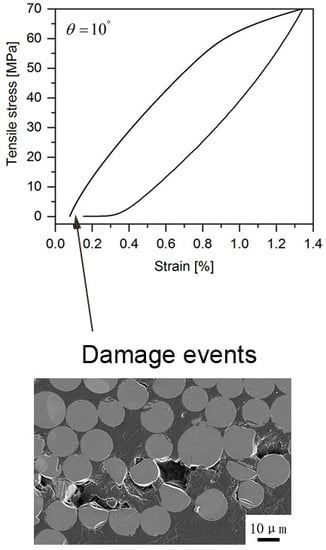Nonlinear Material Model for Quasi-Unidirectional Woven Composite Accounting for Viscoelastic, Viscous Deformation, and Stiffness Reduction
Abstract
1. Introduction
2. Experiments
2.1. Materials and Test Methods
2.2. Experimental Results
3. Nonlinear Material Modeling
3.1. Viscous Strain
3.2. Viscoelastic Strain
3.3. Stiffness Reduction
4. Conclusions
- The overall strains of quasi-UD E-glass/polypropylene composites under off-axis tensile loading come from elastic, viscoelastic, and viscous strains.
- The evolutions of both viscoelastic and viscous strain are dependent on loading stress and the off-axis angle, which may be attributed to different deformation and fracture mechanisms in off-axis tension.
- The viscous strain shows a linear relationship with the evolution of viscoelastic strain, regardless of the loading stress or fiber orientation.
- Based on experimental results, a new material model is developed to describe the nonlinear stress-strain curves of quasi-UD composites under off-axis tensile loading, which account for viscoelastic, viscous deformation, and stiffness degradation. In the proposed model, the plastic deformation is decomposed into two parts, i.e., time-dependent reversible plastic strain (viscoelastic strain) and irreversible strain (viscous strain). The plasticity theory is employed to describe the evolution of the viscous strain with loading stress. The viscoelastic strain is represented as a linear function of viscous strain. In addition, the evolution of time-independent reversible strain (elastic strain) can be estimated with the Weibull distribution of the effective stress of composites. The predictions agree well with the experimental results.
Author Contributions
Funding
Acknowledgments
Conflicts of Interest
References
- Thiruppukuzhi, S.V.; Sun, C. Models for the strain-rate-dependent behavior of polymer composites. Compos. Sci. Technol. 2001, 61, 1–12. [Google Scholar] [CrossRef]
- Hartikainen, J.; Lindner, M.; Harmia, T.; Friedrich, K. Mechanical properties of polypropylene composites reinforced with long glass fibres and mineral fillers. Plast.Rubber Compos. 2004, 33, 77–84. [Google Scholar] [CrossRef]
- Thomason, J. Micromechanical parameters from macromechanical measurements on glass reinforced polypropylene. Compos. Sci. Technol. 2002, 62, 1455–1468. [Google Scholar] [CrossRef]
- Thomason, J. The influence of fibre length and concentration on the properties of glass fibre reinforced polypropylene: 5. Injection moulded long and short fibre pp. Compos. Part A 2002, 33, 1641–1652. [Google Scholar] [CrossRef]
- Tzika, P.; Boyce, M.; Parks, D. Micromechanics of deformation in particle-toughened polyamides. J. Mech. Phys. Solids 2000, 48, 1893–1929. [Google Scholar] [CrossRef]
- Hahn, H.T.; Tsai, S.W. Nonlinear elastic behavior of unidirectional composite laminae. J. Compos. Mater. 1973, 7, 102–118. [Google Scholar] [CrossRef]
- Petit, P.; Waddoups, M.E. A method of predicting the nonlinear behavior of laminated composites. J. Compos. Mater. 1969, 3, 2–19. [Google Scholar] [CrossRef]
- Lin, W.-P.; Hu, H.-T. Nonlinear analysis of fiber-reinforced composite laminates subjected to uniaxial tensile load. J. Compos. Mater. 2002, 36, 1429–1450. [Google Scholar] [CrossRef]
- Matzenmiller, A.; Lubliner, J.; Taylor, R. A constitutive model for anisotropic damage in fiber-composites. Mech.Mater. 1995, 20, 125–152. [Google Scholar] [CrossRef]
- Cho, J.; Fenner, J.; Werner, B.; Daniel, I. A constitutive model for fiber-reinforced polymer composites. J. Compos. Mater. 2010, 44, 3133–3150. [Google Scholar] [CrossRef]
- Sun, C.; Chen, J. A simple flow rule for characterizing nonlinear behavior of fiber composites. J. Compos. Mater. 1989, 23, 1009–1020. [Google Scholar] [CrossRef]
- Xiao, X. A coupled damage-plasticity model for energy absorption in composite. Int. J. Damage Mech. 2010, 19, 727–751. [Google Scholar] [CrossRef]
- O’Higgins, R.; McCarthy, C.; McCarthy, M. Identification of damage and plasticity parameters for continuum damage mechanics modelling of carbon and glass fibre-reinforced composite materials. Strain 2011, 47, 105–115. [Google Scholar] [CrossRef]
- O’Higgins, R.; McCarthy, C.; McCarthy, M. Effects of shear-transverse coupling and plasticity in the formulation of an elementary ply composites damage model, part i: Model formulation and validation. Strain 2012, 48, 49–58. [Google Scholar] [CrossRef]
- Ladeveze, P.; LeDantec, E. Damage modelling of the elementary ply for laminated composites. Compos. Sci. Technol. 1992, 43, 257–267. [Google Scholar] [CrossRef]
- Marklund, E.; Varna, J.; Wallström, L. Nonlinear viscoelasticity and viscoplasticity of flax/polypropylene composites. J. Eng. Mater. Technol. 2006, 128, 527–536. [Google Scholar] [CrossRef]
- Zhai, Z.; Jiang, B.; Drummer, D. Characterization of nonlinear response in quasi-unidirectional e-glass fabric reinforced polypropylene composites under off-axis tensile loading. Polym. Test. 2017, 63, 521–529. [Google Scholar] [CrossRef]
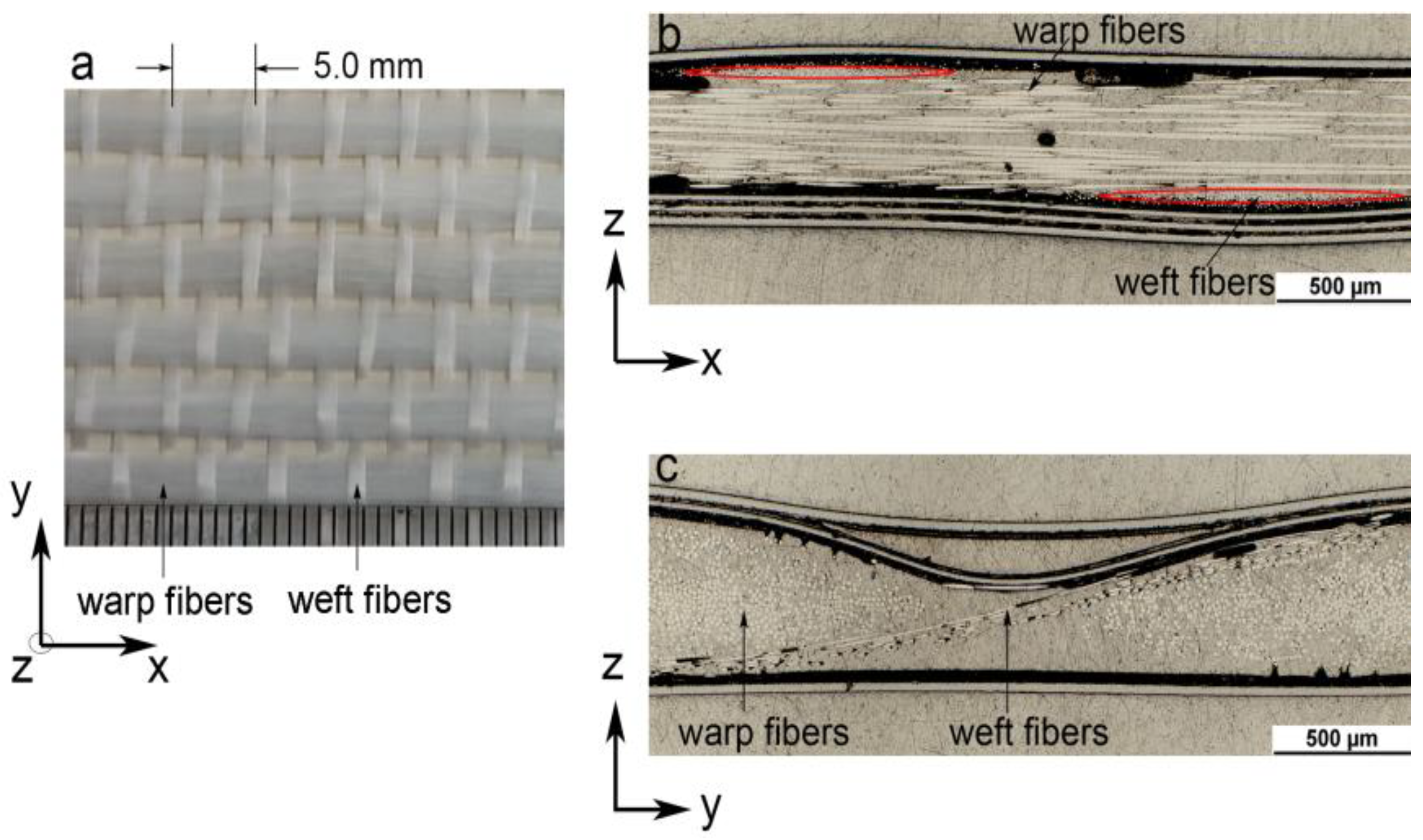
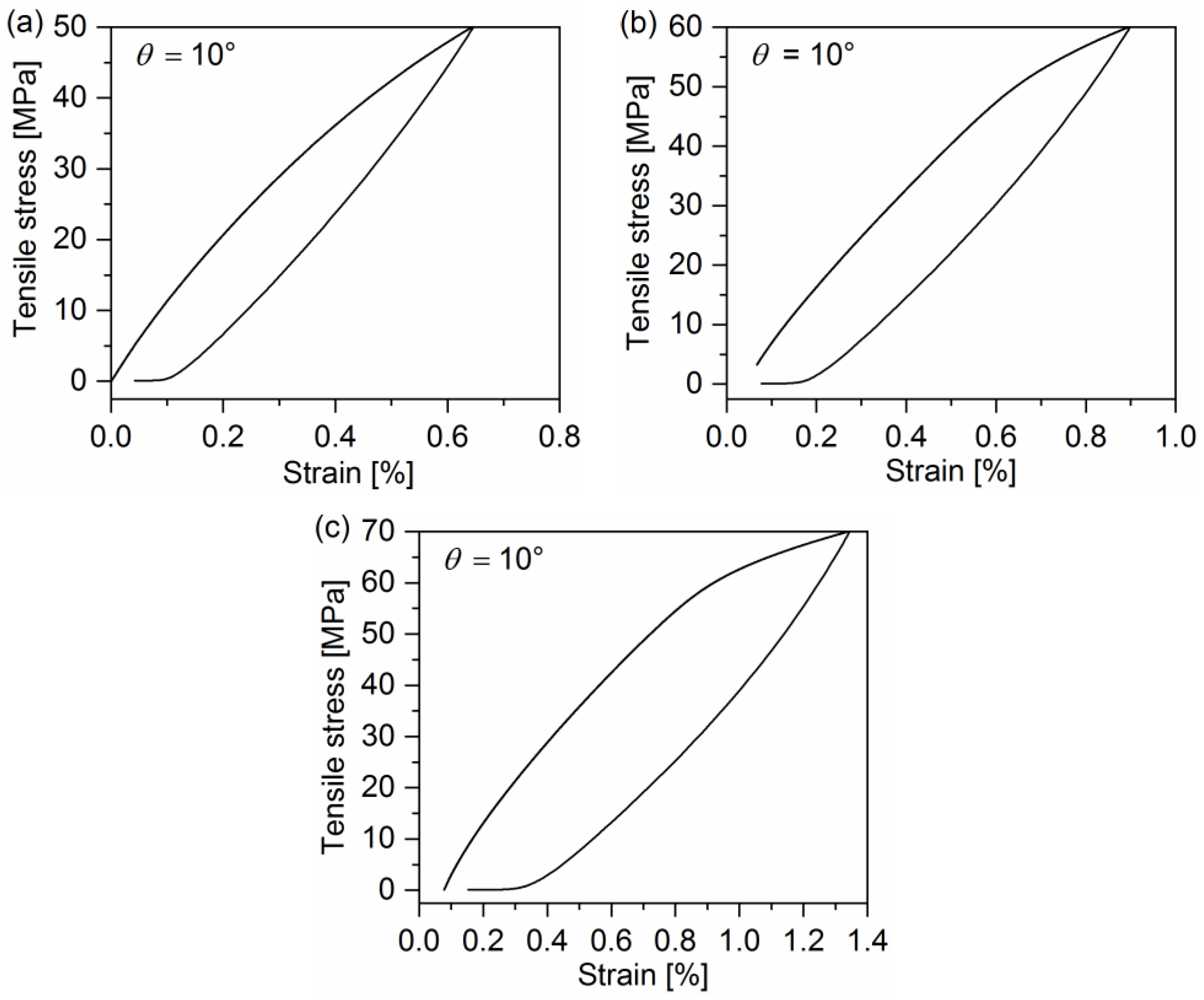
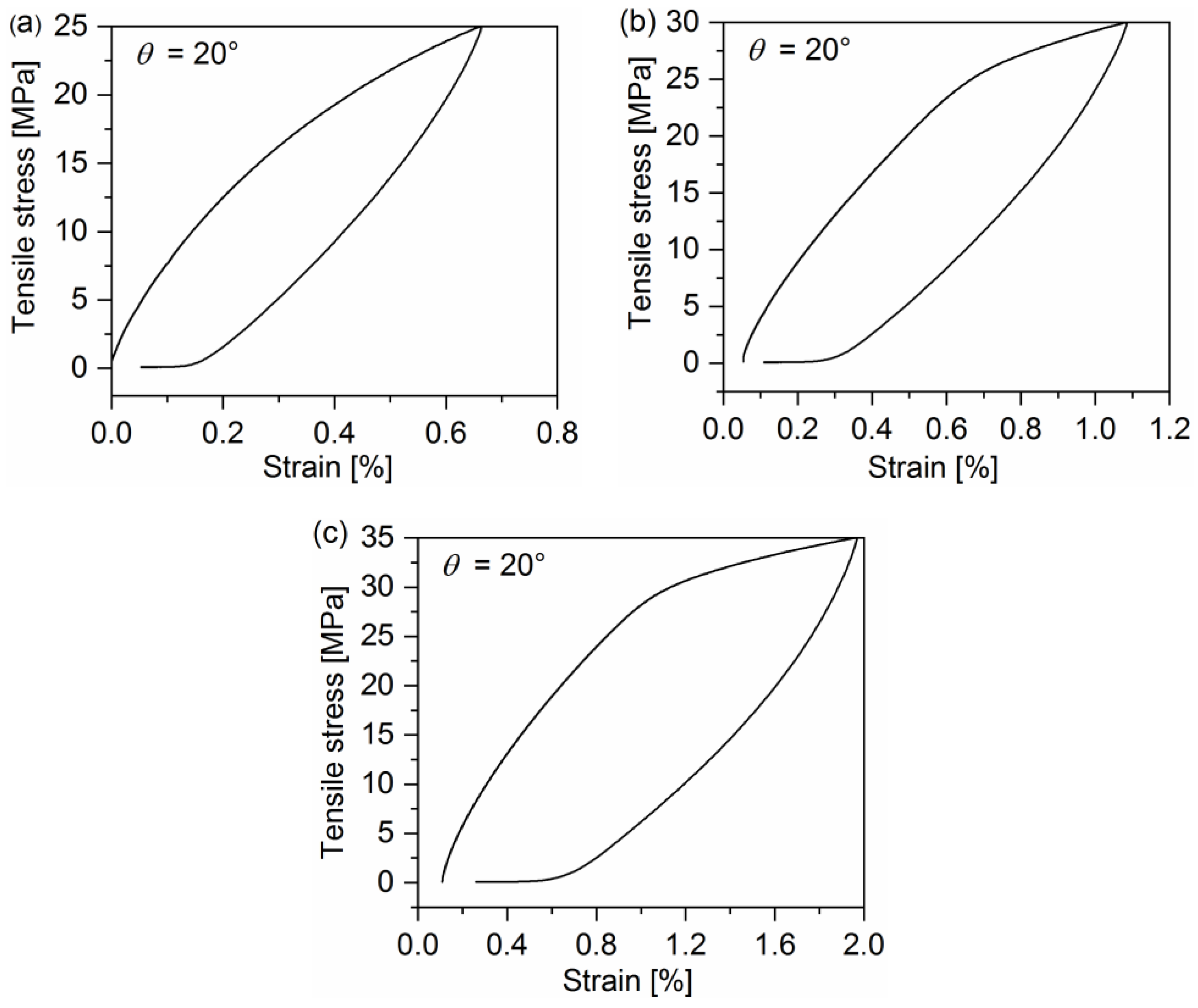

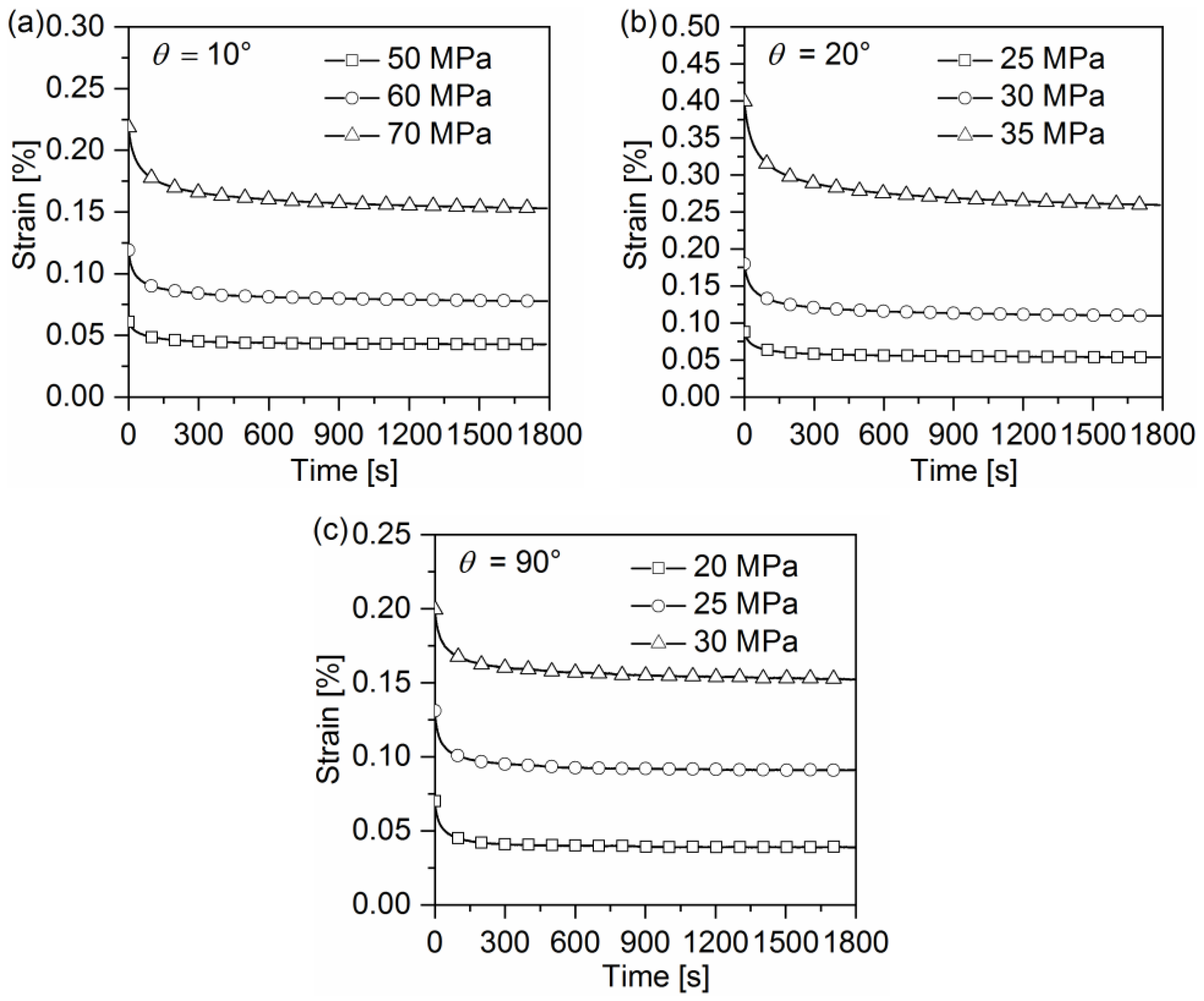
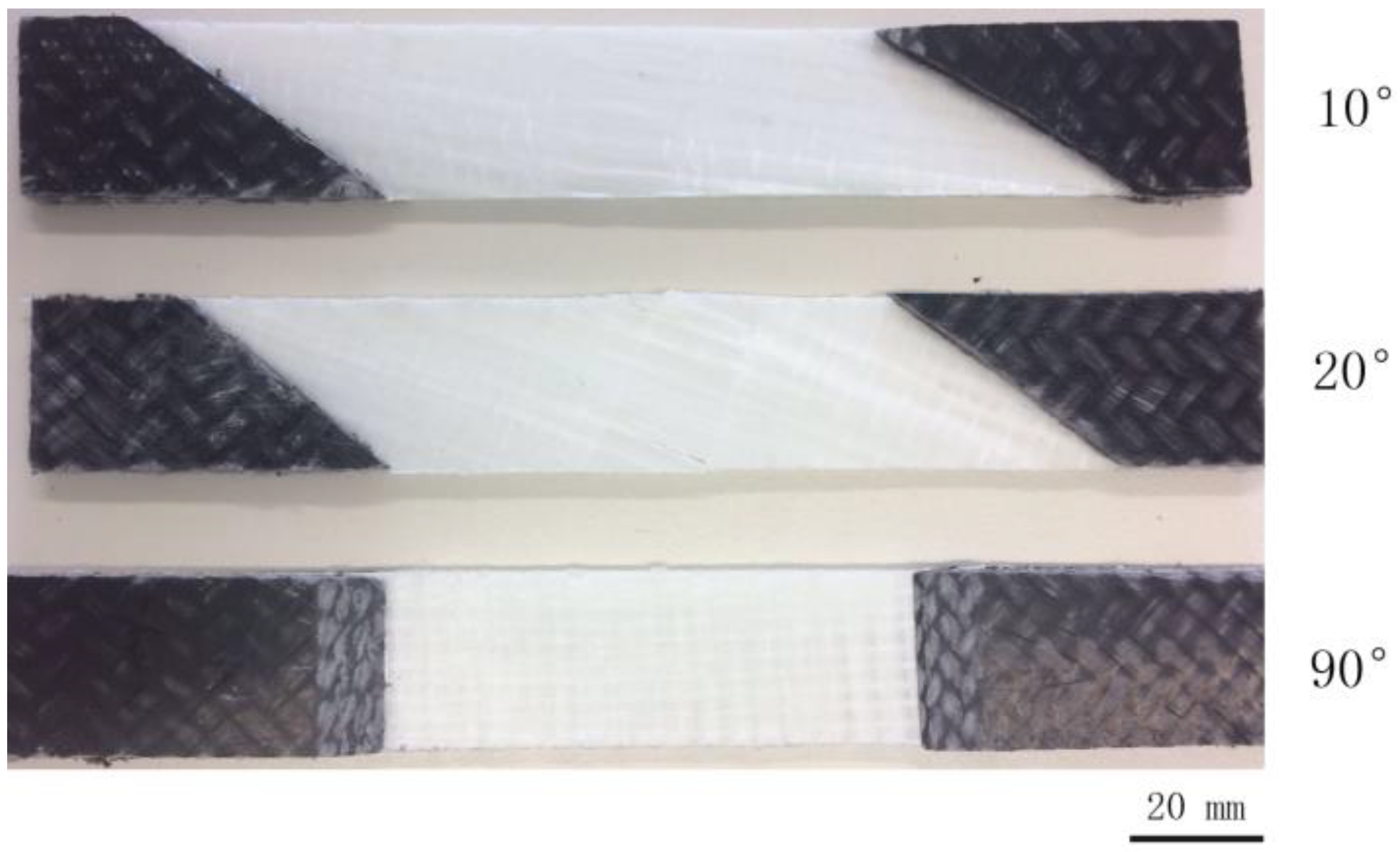
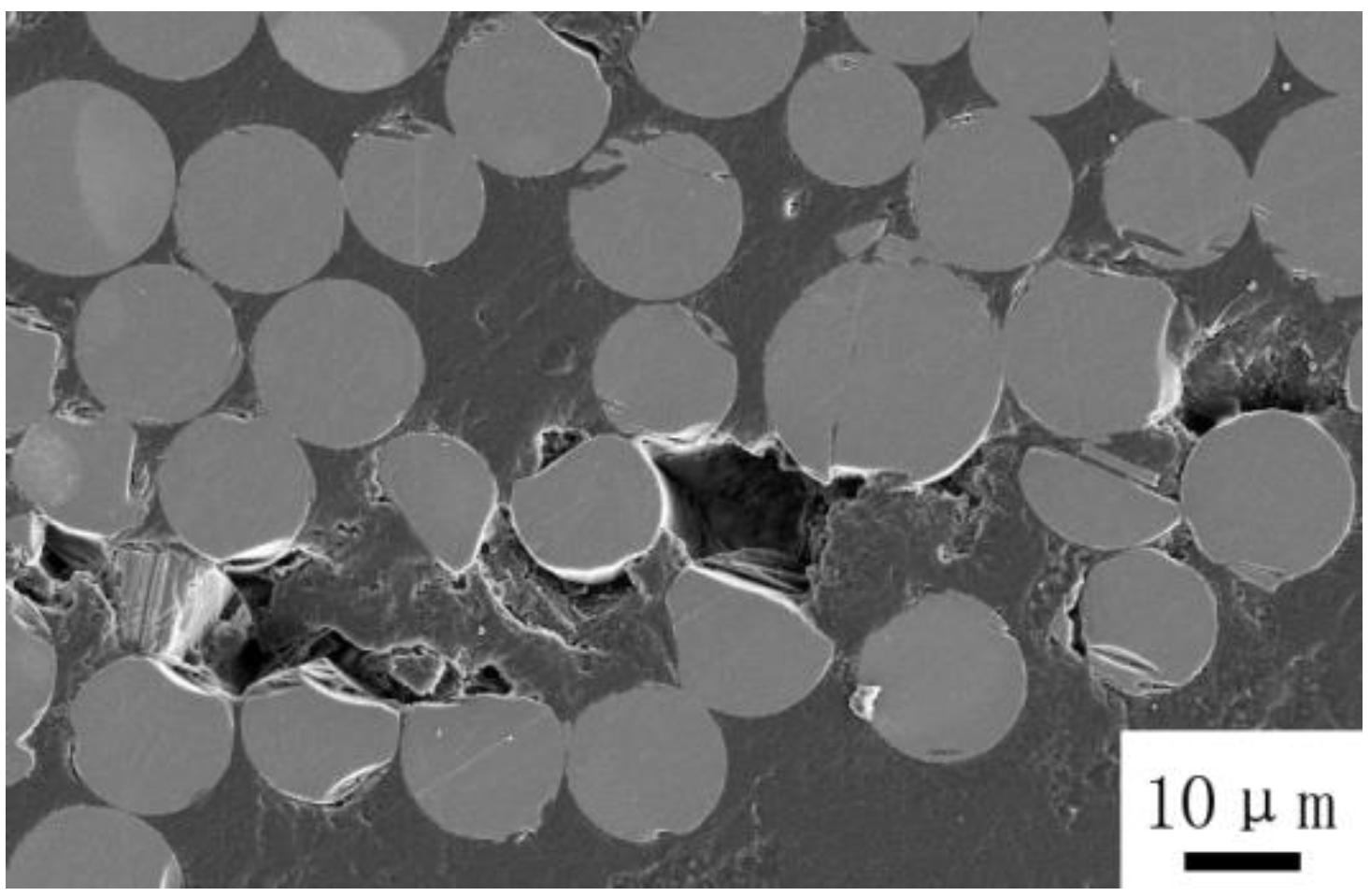
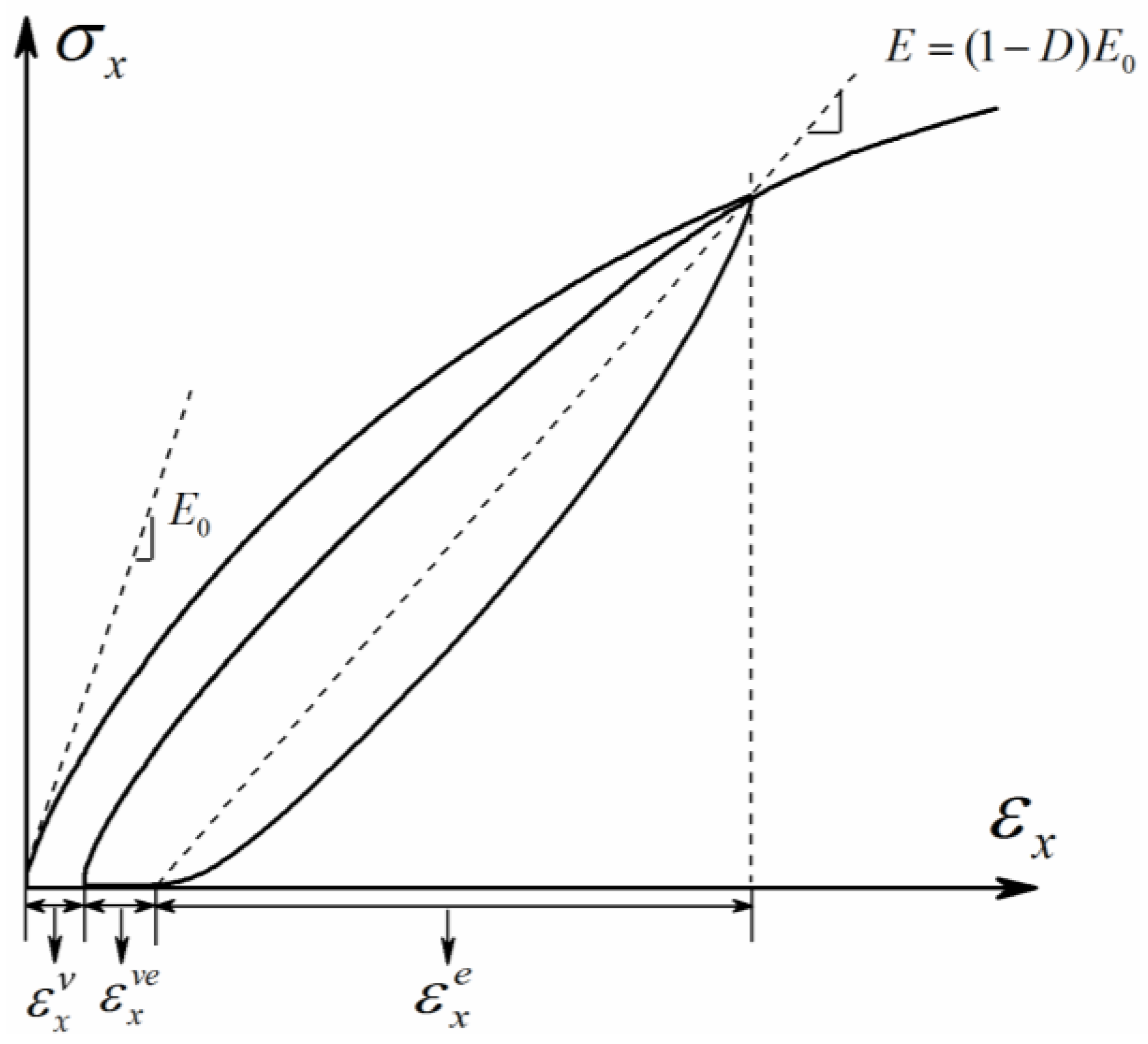
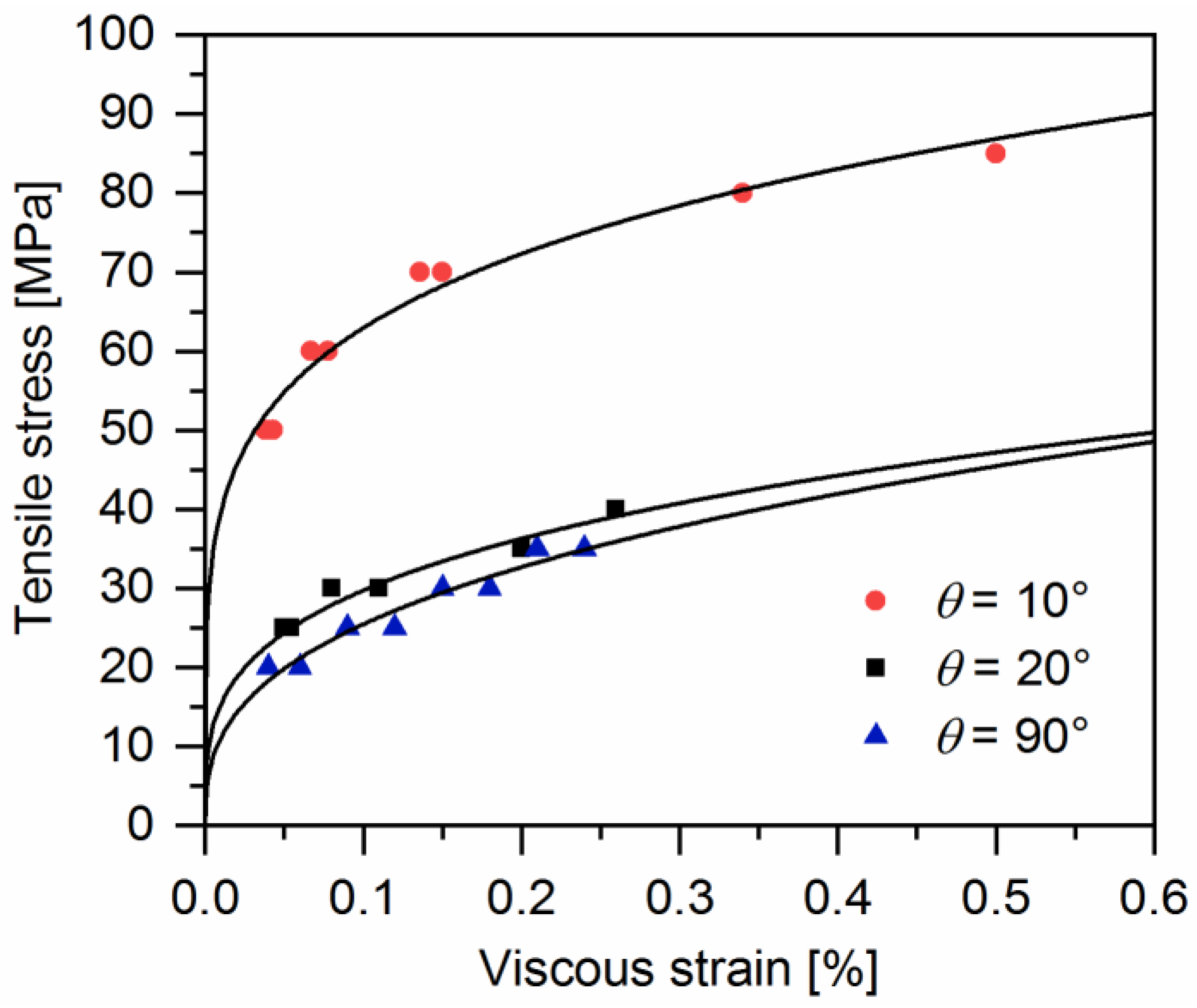
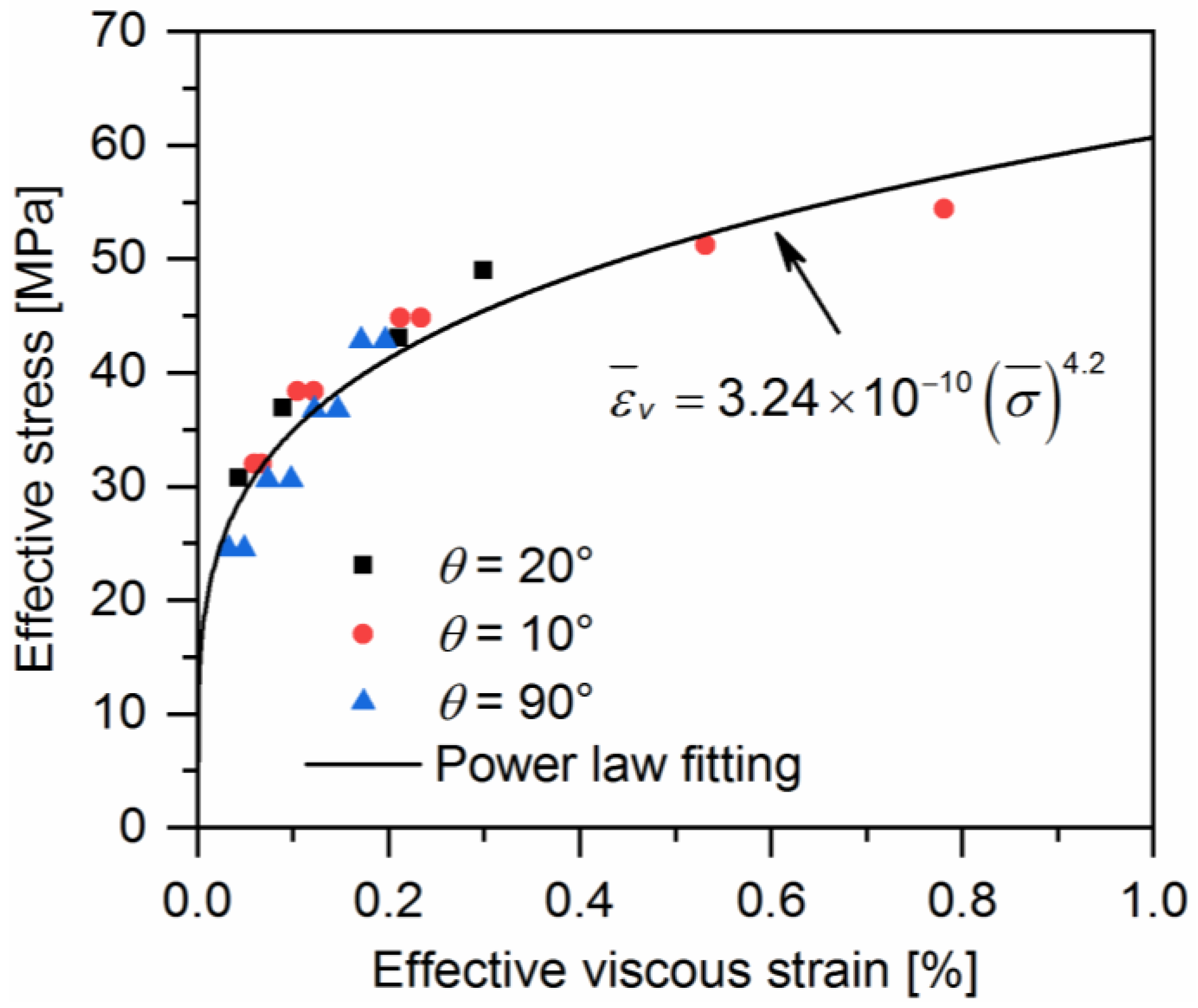
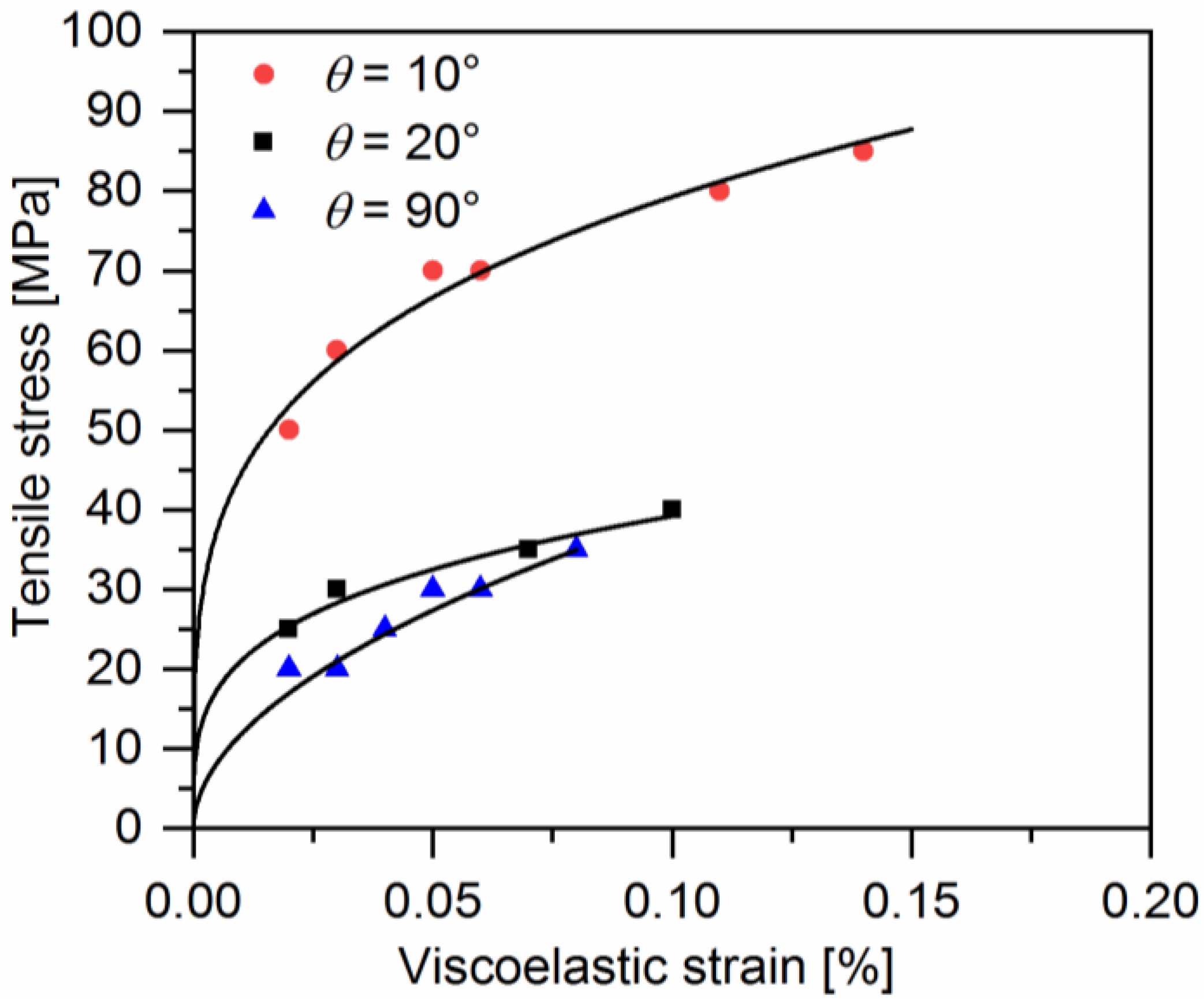
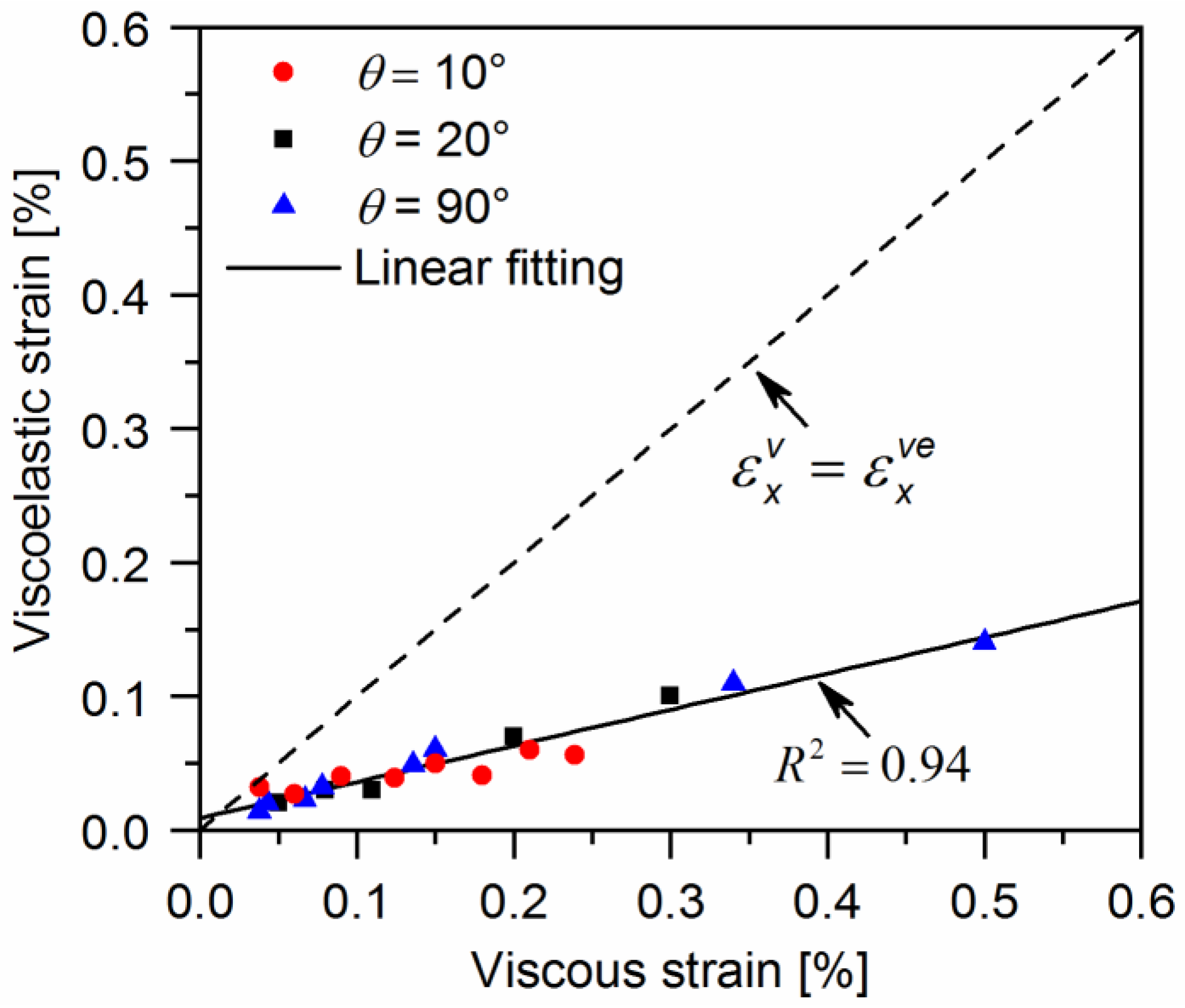


| a66 | A (MPa)−n | n | k | σe(MPa) | ne |
|---|---|---|---|---|---|
| 4.5 | 3.24 × 10−10 | 4.2 | 0.27 | 63 | 2.3 |
© 2018 by the authors. Licensee MDPI, Basel, Switzerland. This article is an open access article distributed under the terms and conditions of the Creative Commons Attribution (CC BY) license (http://creativecommons.org/licenses/by/4.0/).
Share and Cite
Zhai, Z.; Jiang, B.; Drummer, D. Nonlinear Material Model for Quasi-Unidirectional Woven Composite Accounting for Viscoelastic, Viscous Deformation, and Stiffness Reduction. Polymers 2018, 10, 903. https://doi.org/10.3390/polym10080903
Zhai Z, Jiang B, Drummer D. Nonlinear Material Model for Quasi-Unidirectional Woven Composite Accounting for Viscoelastic, Viscous Deformation, and Stiffness Reduction. Polymers. 2018; 10(8):903. https://doi.org/10.3390/polym10080903
Chicago/Turabian StyleZhai, Zhanyu, Bingyan Jiang, and Dietmar Drummer. 2018. "Nonlinear Material Model for Quasi-Unidirectional Woven Composite Accounting for Viscoelastic, Viscous Deformation, and Stiffness Reduction" Polymers 10, no. 8: 903. https://doi.org/10.3390/polym10080903
APA StyleZhai, Z., Jiang, B., & Drummer, D. (2018). Nonlinear Material Model for Quasi-Unidirectional Woven Composite Accounting for Viscoelastic, Viscous Deformation, and Stiffness Reduction. Polymers, 10(8), 903. https://doi.org/10.3390/polym10080903



